No-code/low-code is no longer a philosophical idea or ideal that only lives in hypothetical tech talks. In 2022, it’s how we can manage complex data without massive R&D departments.
Real low-code platforms are up and running already. They help code-blind creatives, managers, and busy developers build apps much faster.
Let’s do a deep dive and explore the current state of no-code/low-code, examine low-code app examples, and how you can start using a platform within your team or organization.
What does no-code/low-code mean?
No-code and low-code are similar concepts that revolve around using smart tools to create software with little to no actual coding.
Unlike in traditional programming, you build on underlying frameworks or APIs (application programming interfaces) to create the functionality you want. These typically come in the form of dedicated platforms. Let’s take a look at these tools in action.
What are low-code and no-code development platforms?
These cloud-based platforms let you use an existing framework, API, or functions to create working apps in minutes.
For example, monday.com recently rolled out the Apps Framework. It gives you full access to our API, integrations, and a robust low-code framework. Together, these tools make it easy to create new unique applications.
With a few lines of code — calling on existing functions — you can apply monday.com functions and create a usable app or custom view.

Look at the example above. In just a few lines of code, there’s a page with a background color picker, a customizable title, and a message. Attaining that type of functionality from scratch would take much longer as you would have to write code accessing and storing information in a database.
And the above is only scratching the surface of what you can do. No-code platforms focus on a 100% code-free interface for building apps. You can use drag and drop to map out your desired functionality.
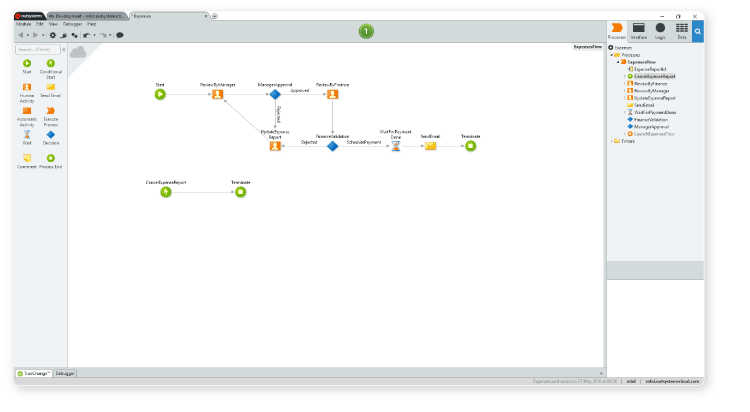
What is the difference between low-code and no-code?
The main difference between them is that no-code lets you create an application with zero lines of written code, while low-code provides a framework of existing functions and pre-built adapters for you to build with, requiring some coding.
But that’s not the whole story. There’s also a difference in terms of scope and capabilities.
- With a low-code platform, developers can create advanced backend utilities and integrations. They can also quickly build applications for other devices and platforms.
- With a no-code platform, you can create simple front-end apps using existing integrations and functionality. Even beginners with no knowledge of basic concepts like data handling can create functional apps.
No-code and low-code platforms are also known as HPaPaaS and LCAP. What are HPaPaaS and LCAP?
HPaPaaS stands for high productivity application platforms as a service and LCAP is short for low-code application platforms.
Now that we know the difference between no-code and low-code, let’s examine what low-code means on a practical level for businesses.
What low-code means for business application development
These days, startups and enterprises alike use a wide range of different platforms and handle an obscene amount of data. Think petabytes — 1PB = 1 million gigabytes! — and entire data centers.
They’re always working on custom tools and integrations to try to handle these oceans of data.
Building apps from scratch for every use case is impossible. For starters, companies don’t have enough developers. There’s also a crushing time pressure to deliver performance improvements.As a result, more and more developers and businesses are turning to low-code.
In 2019, 37% of developers used or planned to use low-code products for business app development.
And according to Gartner’s predictions, this number will only keep growing. By 2024, experts estimate that the majority of app developers will use low-code frameworks.
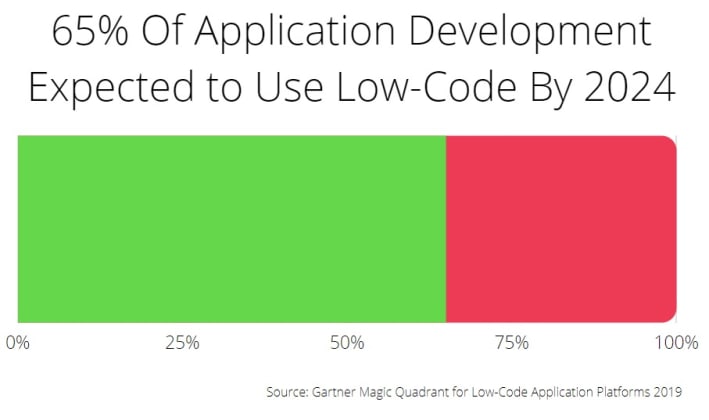
And it’s not just Gartner’s opinion. Developers, executives, and employees living in the faster development cycle feel the same way. With a low-code application development approach, your company can get what it needs from the data. No multi-year testing and waiting process required.
Read more about why we think low-code and no-code are the future of the enterprise application.
Let’s bring this full circle. Why are we even talking about low-code? Yup, it’s because monday.com Work OS is a no-code/low-code platform. Let’s see what this looks like in action by examining a few of our apps.
5 low-code app examples from the monday.com Apps Framework
Using the monday.com Apps Framework for low-code development, our developers created the following apps anyone can use to optimize their workflows.
Digital whiteboard app
The digital whiteboard app makes the creative process a lot easier — and more fun — for distributed or fully remote teams.
Instead of everyone taking their own notes during a call, you can collaborate live. Draw, add shapes, drag and drop items, and edit in real-time. Together.
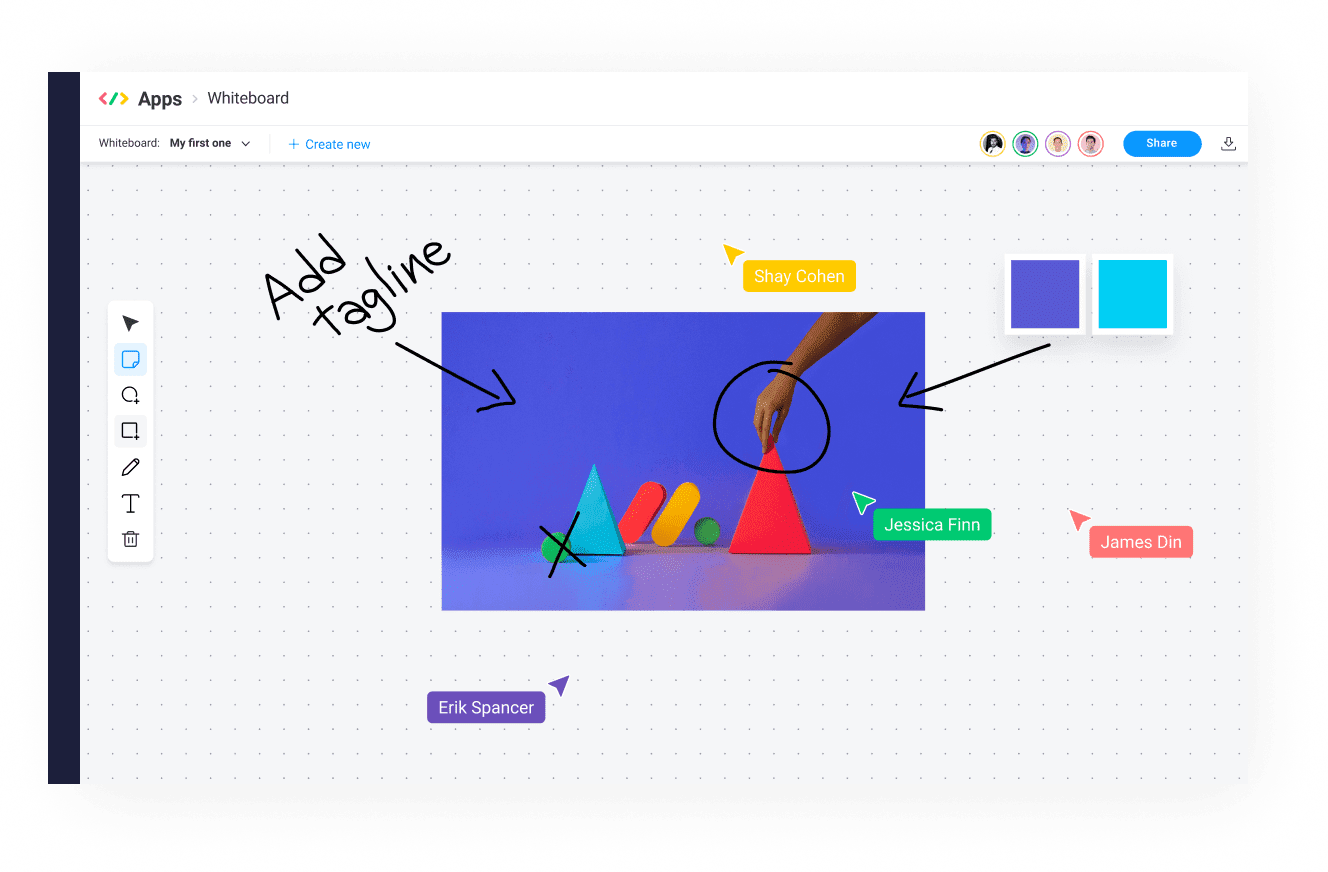
It’s a must-have feature for both agencies and in-house creative departments alike. And it’s built entirely on top of our Apps Framework.
Remember, that’s only one example of it in action. Let’s check out the next.
GPS-based time tracking app
When you track all hours someone works, it can be hard to categorize what tasks require the most time.
Plus, it’s atypical for employees to have to clock in and out of categories all the time. That’s where the GPS-based time-tracking app for monday.com comes in handy. You can add different work sites and tie them to a specific GPS coordinate.
Then, whenever your employees are on-site, you can automatically track their actual working hours.
![]()
This app is perfect for managers as it delivers a new integration with a third-party GPS tracking system.
Retrospective tools app
Anyone who’s ever been part of a Scrum sprint knows that the retrospective is crucial. It’s the best source of game-changing insights in the process.
Knowing what you did right and wrong is the only way forward. You can’t improve without that knowledge. But just going on everyone’s impression and fallible memories isn’t a good idea.
Enter the retrospective tools app for monday.com. The unique replay view shows you the flow of tasks. Identify where bottlenecks originated and learn how they impacted the overall project.
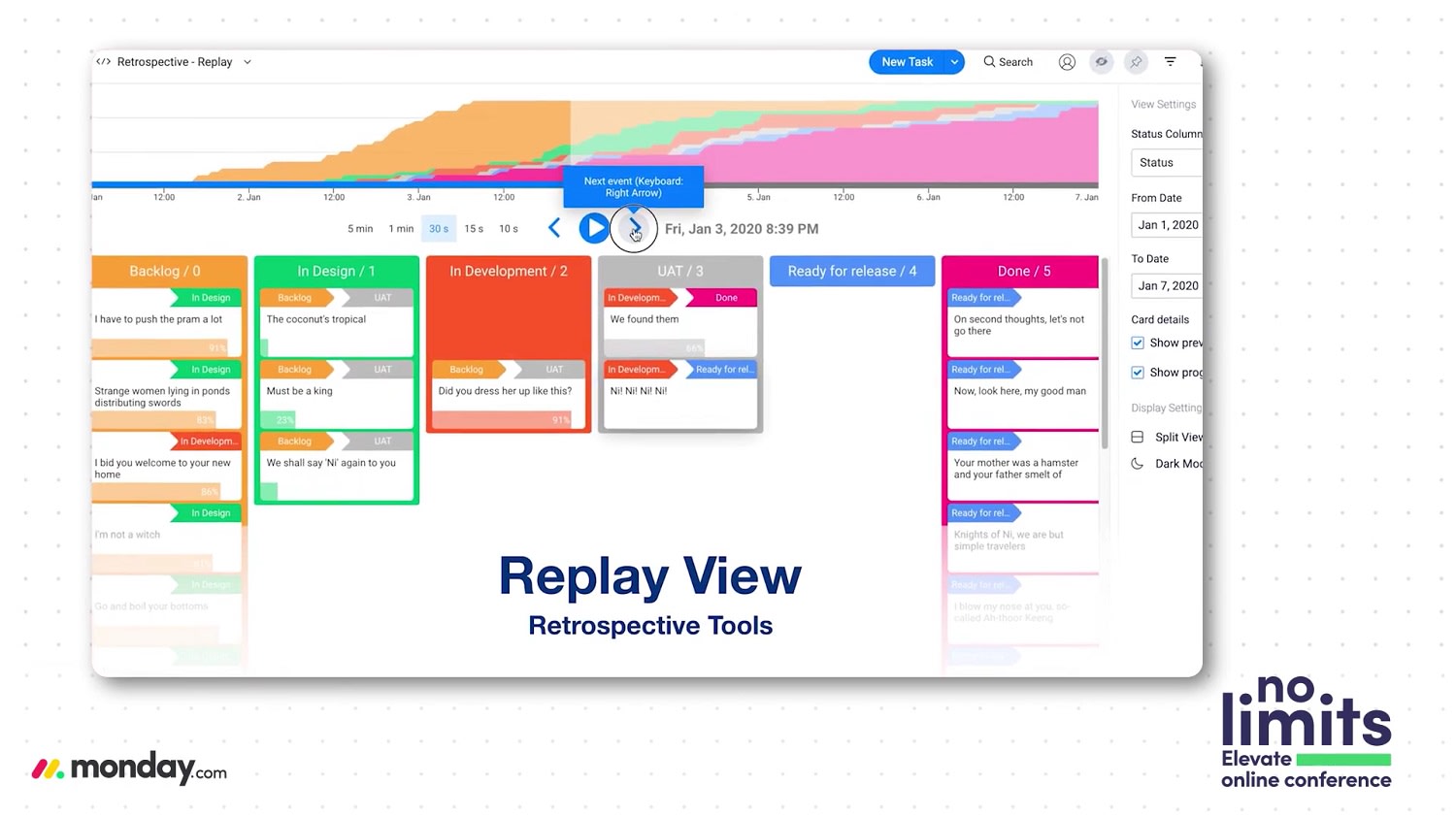
Cumulative flow diagrams and detailed statistics views help you analyze the smallest details.
It’s the perfect tool to help you improve how you handle complex projects. Engineering, manufacturing, and project management professionals take note.
Live collaboration app
This live collaboration app focuses on real-time brainstorming ideas and solutions. The main interface is a document that you can edit live, with highlights and icons color-coded by user. It also includes a unique voting module that allows all users to vote by numbers on crucial questions.
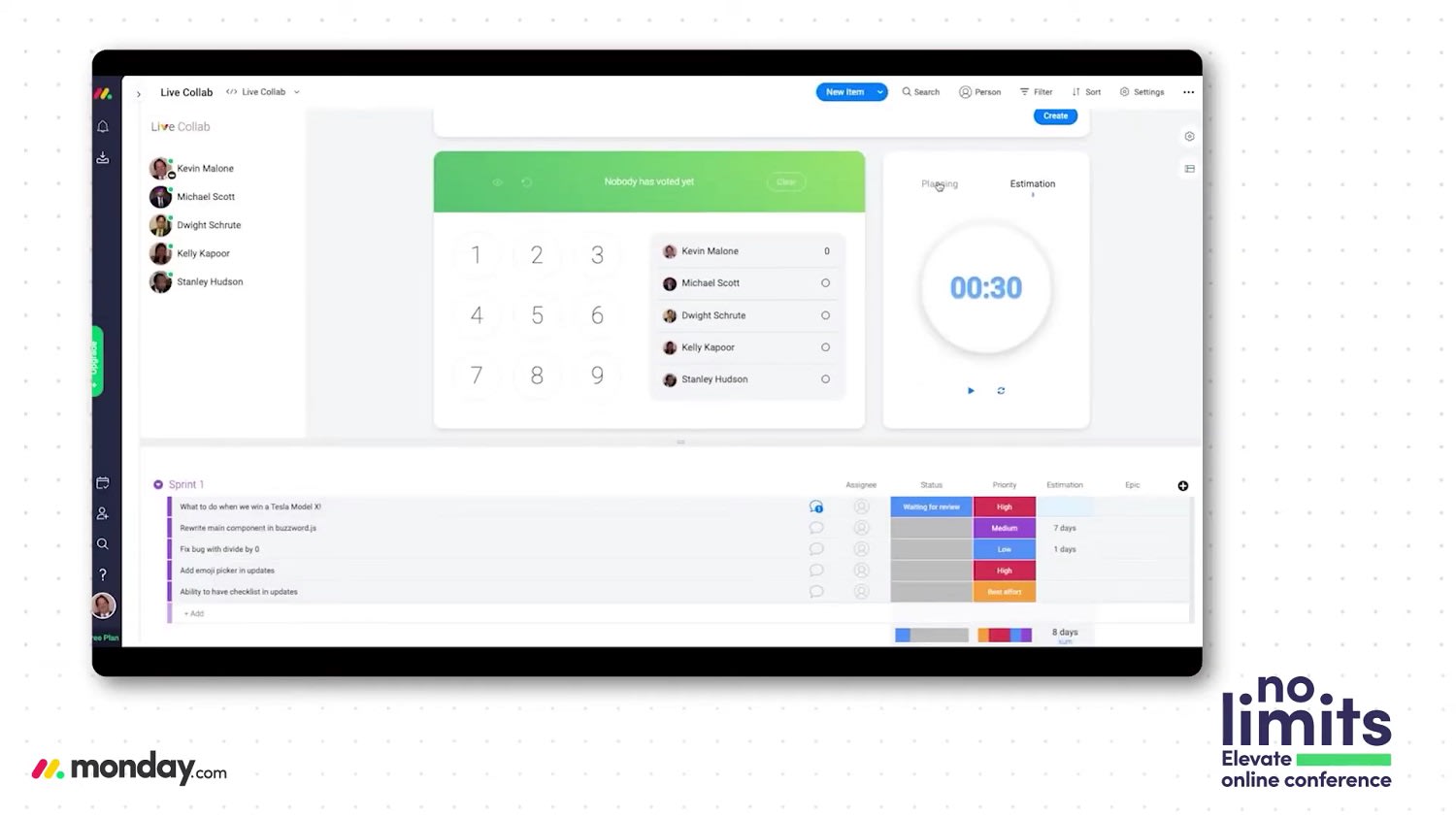
Board to globe app
The final example is an app that visualizes the location of projects and resources. You can visualize international offices, sales leads, or employees.
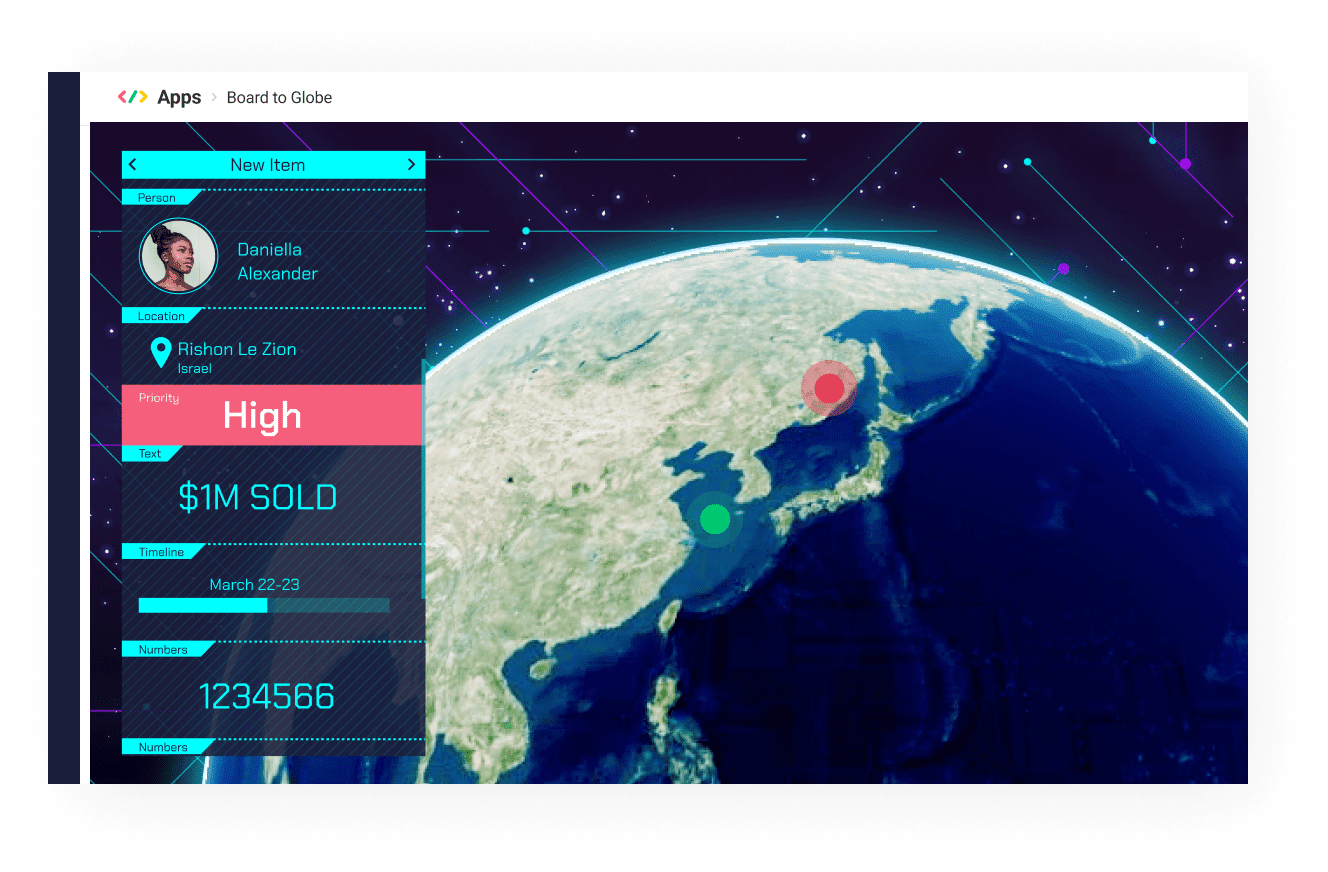
It can help you gauge the importance or needs of different regions. With a glance, you can see if you should invest more in a country or city. Or, you can pinpoint a regional office that needs more help.
How to use low-code/no-code with monday.com
Want to make better use of data without a costly, long-term development project?
monday.com lets you build a work management platform that suits your business perfectly. Customizable templates, workflows, and tons of native integrations help you get more work done.
Use no-code automations and integrations to streamline your workflow.
Automation is key to creating an efficient workflow. With no human touch, there’s no forgetting, typos, or unnecessary delays. monday.com offers a wide range of automations and integrations to make your life easier. For example, you can automatically sync data between platforms as show in the image below.
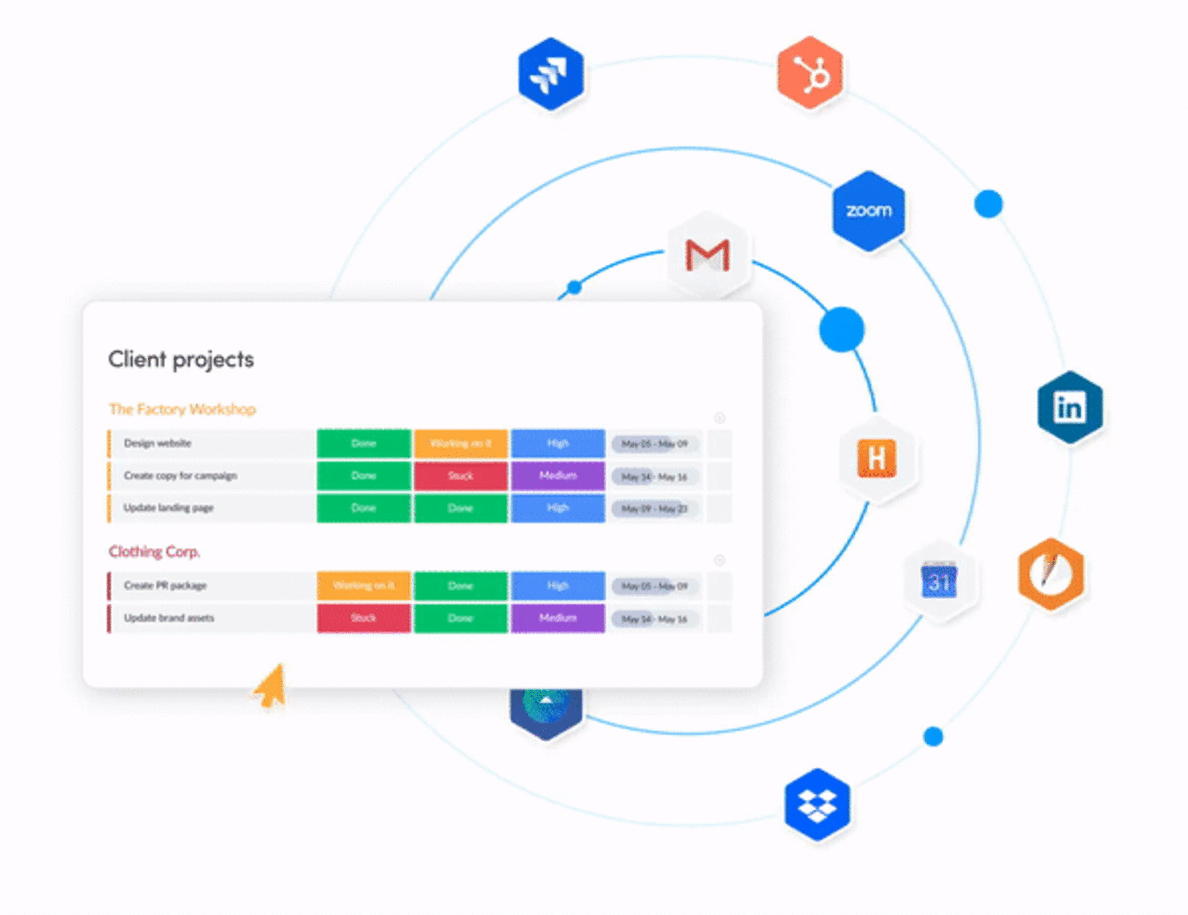
You can also use our automation builder to create the workflow you need from scratch. With simple tools like this, everyone on the team can become a citizen developer.
Use low-code to create custom apps for your business needs quickly.
Our low-code app development platform makes it easy to build new tools for your business. Do you need custom-made features for handling or storing specific data? No problem. We’ve got you covered.
50+ pre-built adapters make it easy to integrate data with other platforms. Even if it’s a custom in-house tool, you can take advantage of our robust API. We also have built-in version control to help you manage different app releases.
Use our robust project management features to speed up your progress.
monday.com isn’t a platform where you need to build all functionality from scratch. We’re a complete Work OS that also offers a low-code framework. Don’t forget to take advantage of our suite of project management features.
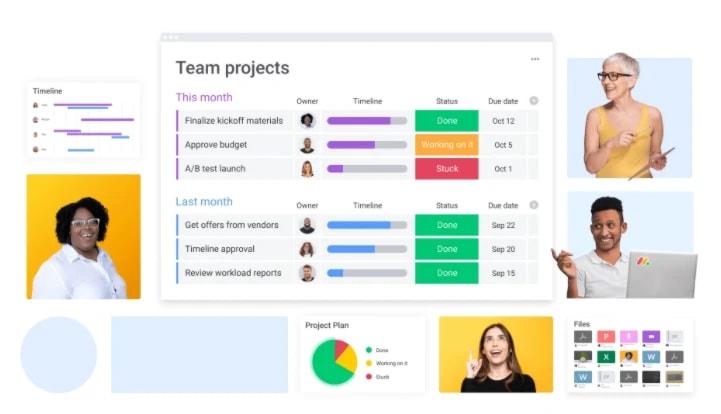
We offer Kanban boards, Gantt charts, customizable templates, real-time dashboards, and much more.
Automate workflows and core business tasks without the up-front investment
It’s never been easier to create basic applications. You can quickly automate core business tasks and boost your team’s productivity.
At monday.com, we’ve dedicated ourselves to create an easily extensible Work OS. It’s a robust, scalable foundation that you can build on to create your ideal workflows.
Check out our no-code/low-code development tools to learn more about how you can transform your workflow with custom-made monday.com apps-without needing to take a single software engineering course.
